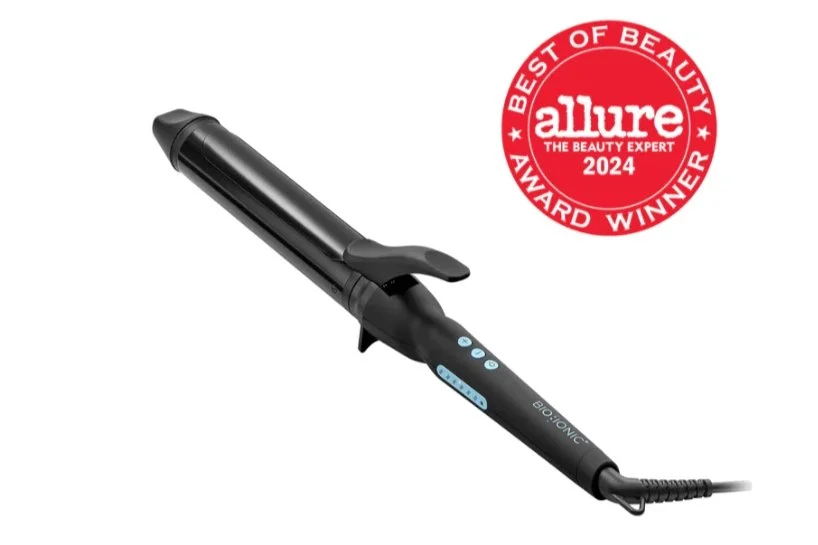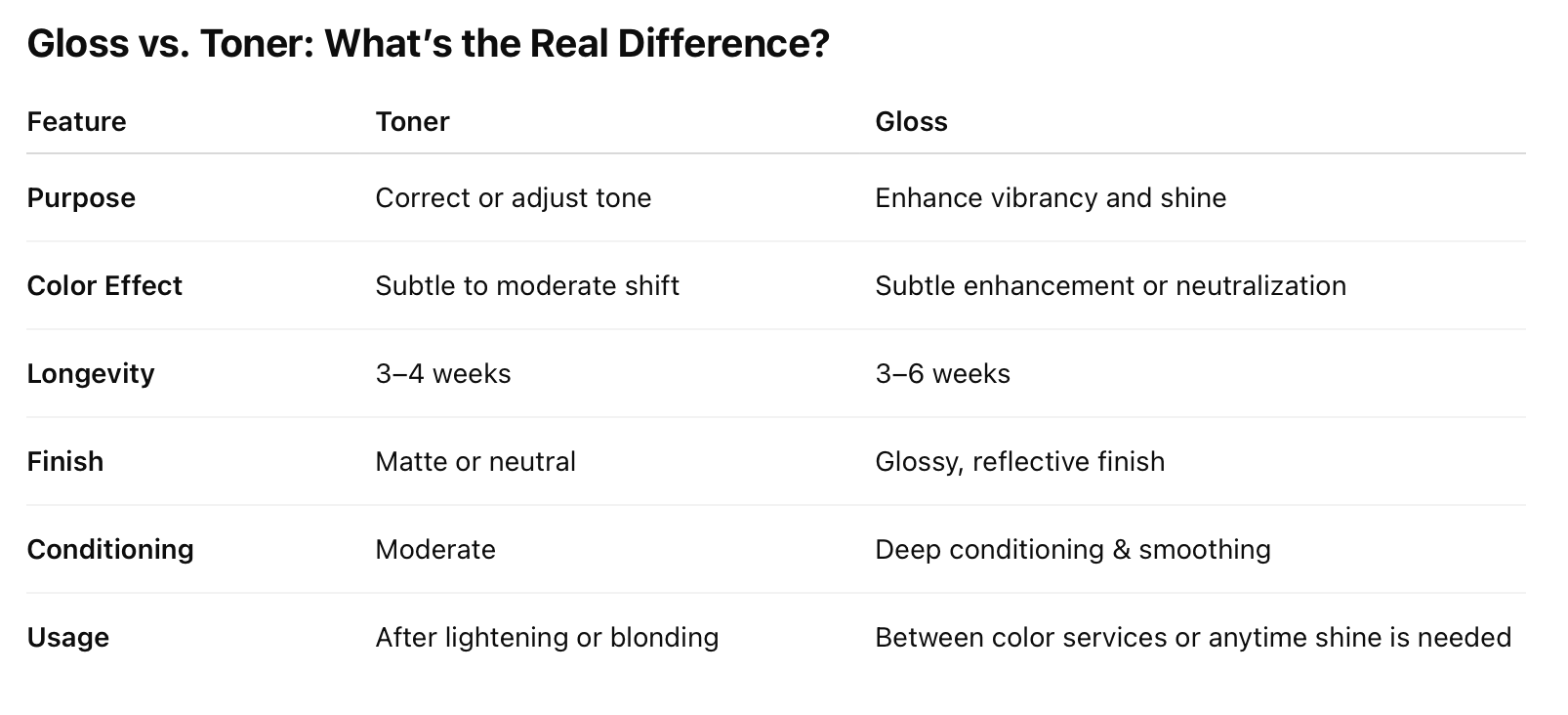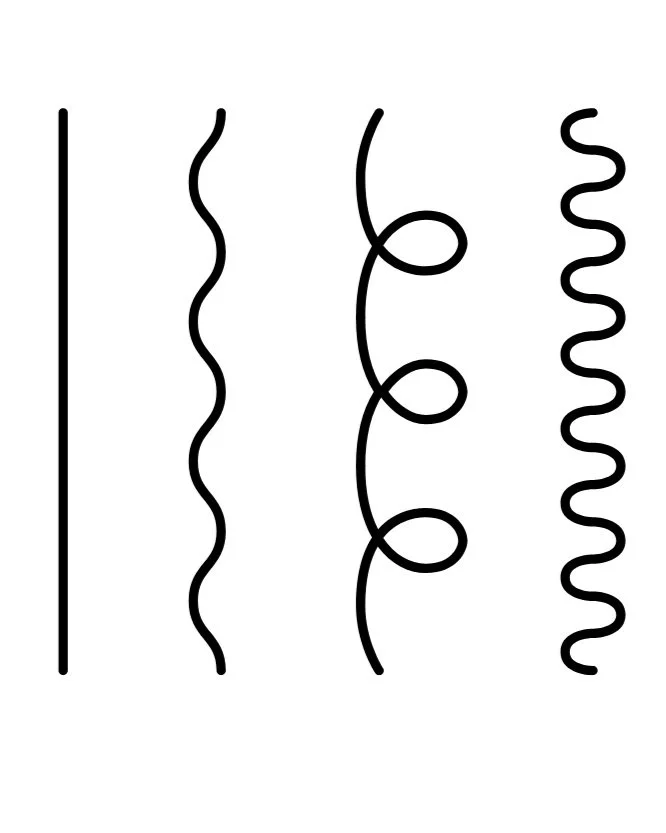Soft Dimension & Shine: A Summer Hair Refresh at ánthos studio.
Sometimes, the most minor updates make the most significant impact, especially when it comes to hair. For this beauty, we kept things soft and intentional with a few high-impact touches that brought her entire look back to life.
Here’s what we did:
Touched up her highlights to add soft, dimensional brightness
Added pop around the face with light, bright framing pieces
Gave the ends a fresh trim for health and movement
Styling Breakdown:
To protect and prep the hair, I used Redken Acidic Color Gloss Heat Protectant, which not only shields from heat but also enhances shine and smoothness, making it perfect for highlighted hair.
Next, I worked in Olaplex No.6 Bond Smoother, a leave-in styling treatment that helps reduce frizz and hydrate the hair without weighing it down.
Curls were created using a 1.5” flat iron for that soft, lived-in wave we love. To finish, I misted in Kenra Dry Texture Spray to add hold and volume while keeping the texture light and touchable.
This look is everything summer hair should be, low-maintenance, radiant, and effortlessly fresh.
Ready to elevate your color with soft brightness and healthy shine?
Book your appointment today at ánthos studio and let’s bring your hair back to life.
Why We Love the Bio Ionic Long Barrel Curling Iron at ánthos studio.
At ánthos studio, we believe luxury is in the details, and that includes the tools we trust. When it comes to creating effortless, soft waves or glam, polished curls, the Bio Ionic Long Barrel Curling Iron is the go-to. This professional-grade tool isn’t just stylish, it delivers exceptional results with thoughtful technology designed to care for your hair.
What Makes the Bio Ionic Long Barrel Curling Iron So Special?
Long Barrel Design
Perfect for longer hair or layered cuts, the extended barrel makes it easier to style more hair in less time, with no awkward overlapping or re-curling.
NanoIonic™ Mineral Technology
This advanced technology helps seal the cuticle, lock in moisture, and eliminate frizz for smoother, shinier curls that hold all day.
Even Heat Distribution
With consistent heat from root to tip, this iron ensures every section is evenly curled, reducing heat damage and saving precious time in your routine.
Adjustable Temperature Settings
Whether you're working with fine, fragile hair or thick, textured locks, the variable temperature control allows for customized styling without compromising hair health.
Who It’s Best For
This curling iron is ideal for:
Clients with medium to long hair
Those looking for long-lasting curls without frizz
Anyone who loves modern, beachy waves or classic curls with a polished finish
Extension clients especially love it, thanks to its extra barrel length and smooth glide!
Shop the Curling Iron We Trust
Looking to upgrade your tools at home? We proudly carry the Bio Ionic Long Barrel Curling Iron online. Shop through our online store to elevate your styling game.
** At ánthos studio, we only recommend tools that align with our standard of luxury, performance, and hair health. The Bio Ionic Long Barrel Curling Iron checks every box, and then some.
QUIET LUXURY HAIR: The Most Requested Look of Summer 2025.
Understated, polished, and endlessly chic. Here’s why everyone’s asking for “quiet luxury” hair.
In a world of loud trends and fleeting fads, a quieter movement is making waves, one that whispers elegance instead of shouting for attention. This summer, quiet luxury hair has become the ultimate request in the chair at ánthos studio.
But what exactly is quiet luxury hair?
It's the art of looking effortlessly elevated. Think:
soft, dimensional color that mimics how hair naturally lightens in the sun
haircuts that fall just right without needing heat styling
seamless extensions that don't scream, "I'm wearing extensions."
a finish that reads healthy, hydrated, and expensive
It's not about being basic. It's about being intentional.
What defines the quiet luxury look?
Color: subtle baby lights, custom glosses, and tone-on-tone dimension that grows out gracefully
Cut: clean lines, blunt ends, and airy layers designed to enhance your natural texture
Extensions: ultra-blended wefts or v-light methods to add fullness, not flash
Finish: polished, touchable, never overstyled
The luxury is in the details
At ánthos studio, we specialize in looks that don't chase trends. They transcend them. Every color formulation is customized, every cut is tailored to your lifestyle, and every extension method is carefully selected with precision.
The goal? To achieve a naturally elevated look, people often wonder if it's just a matter of genetics.
Tonya's quiet luxury staples:
A rich espresso-to-walnut brunette with face-framing dimension.
Minimal layers paired with a silky pressed style or soft wave set.
Two rows of hand-tied wefts for that full, plush, effortless thickness.
A hydrating gloss for light-catching luster
The finishing touch: luxe shine that speaks volumes
Quiet luxury hair is never loud, but it always leaves a lasting impression. To elevate your look even further, we recommend the Kenra Luxe Shine line, a weightless, high-gloss finish that enhances your hair’s natural movement and luster.
Go-to trio:
Each product is infused with precious gold for radiant shine. No residue, no heaviness, just that refined glow your hair deserves.
→ shop the Kenra luxe shine line here and maintain that polished finish between visits.
Final thoughts:
Quiet luxury isn't just a hair trend; it's a mindset. It's about investing in quality, embracing ease, and allowing your beauty to feel both refined and relaxed.
Ready to step into your quiet luxury era?
📲 Book your personalized session at ánthos studio, and let's craft your signature understated glow.
Hair Gloss vs Toner: What’s the Difference and Which One Do You Need?
You just left the salon with the perfect dimensional, vibrant, and glowing shade. But a few weeks later, your color looks dull or slightly off-tone. Enter the gloss and the toner. These two services are often confused, but each plays a different role in keeping your hair color fresh, reflective, and beautifully balanced. At ánthos studio, we believe informed clients make confident choices. Let’s break down what makes glosses and toners different and how to know which one is right for you.
First, What Is a Toner?
A toner is a color-depositing treatment used to adjust or refine the tone of your hair after lightening or coloring. It’s typically applied after a blonding service or highlight to neutralize unwanted hues (like brassiness or too-yellow tones) or to add a specific tone like ash, beige, or champagne.
Key Functions of a Toner:
Neutralizes warmth or brassiness
Adds desired undertones to blonde or lightened hair
Helps achieve a specific shade goal (like icy, golden, or cool blonde)
Usually has a matte or soft finish depending on the formula
Who Needs It?
If your hair is lightened or highlighted, toner is almost always part of the process. You may also need a refresher toner between color services to keep your tone on point.
What Is a Hair Gloss?
A gloss is a semi-permanent conditioning treatment that adds shine, enhances tone, and smooths the hair cuticle. Glosses can be clear or tinted, and while they don’t drastically change your color, they breathe life back into it.
Key Benefits of a Gloss:
Boosts shine and softness
Revives faded color or dull ends
Enhances richness or vibrancy (for all hair shades)
Can slightly shift the tone or deepen the color
Seals the cuticle for a healthier, light-reflective look
Who Needs It?
A gloss is your glow-up if your hair feels lackluster, faded, or just “meh” between color appointments. It’s especially great for brunettes, redheads, and blondes wanting to refresh without a full-color service.
When You Might Need Both
In many cases, toner and gloss are used together or layered in a single visit. For example:
After a highlight, we may tone to neutralize warmth, then apply a gloss to add depth and dimension for a high-shine finish.
At ánthos studio, we customize every formula and layer them with precision to enhance your overall color without compromising hair health.
Client Favorites in 2025
This year, our most-requested tones and glosses include:
Champagne glosses for a soft, sparkling blonde
Mocha and chestnut glosses to deepen rich brunettes
Rosé toners for a subtle pink-beige glow
Ashy toners to cancel brass and maintain a cooler palette
Conclusion:
Glosses and toners are the unsung heroes of color maintenance. They are small but mighty treatments that make a huge impact. Whether you're looking to revive shine, refresh tone, or correct brassiness, knowing the difference can help you make the best choice for your hair goals.
Ready for a Refresh?
Book a gloss or toner refresh at ánthos studio and let your color shine through, flawlessly.
Understanding Hair Types & How to Care for Them
Hair Typing-
Hair types are generally categorized using the Andre Walker Hair Typing System, which breaks hair into four main categories:
Type 1: Straight
Type 2: Wavy
Type 3: Curly
Type 4: Coily/Kinky
Each of these categories is further divided into subcategories (A, B, and C) based on the width and tightness of the strands.
When it comes to hair care, one size doesn’t fit all. Understanding your hair type is the key to choosing the right products, treatments, and routines to keep your locks looking their best. Whether your hair is straight, wavy, curly, or coily, each type has unique characteristics and requires specific care to maintain health and manageability. Let’s dive into hair types and how to best care for them.
Hair Type Classification
Type 1: Straight Hair
Straight hair is the easiest to identify—it’s naturally sleek and falls without forming waves or curls.
Subtypes:
1A: Very fine, thin, and lacks volume.
1B: Straight with a bit more body and volume.
1C: Thicker and coarse, may have slight bends.
Straight Hair Care Tips:
• Use lightweight products to avoid weighing hair down (look for volumizing shampoos and mousses).
• Avoid excessive oils unless the hair is dehydrated. A lightweight serum or dry oil works best.
• Clarify regularly to prevent buildup since straight hair can get greasy quickly.
• Add texture with dry shampoos, sea salt sprays, or lightweight styling creams.
Type 2: Wavy Hair
Wavy hair sits between straight and curly, often forming an “S” shape.
Subtypes:
2A: Loose, barely-there waves.
2B: More defined waves with some frizz.
2C: Thick, deep waves that verge on curls.
Care Tips:
• Use lightweight, moisturizing products to enhance waves without weighing them down.
• Avoid heavy oils and butter, which can flatten waves.
• Diffuse hair or air-dry to encourage wave formation.
• Control frizz with anti-humidity serums or curl-enhancing creams.
Type 3: Curly Hair
Curly hair naturally forms ringlets and has more volume and bounce.
Subtypes:
3A: Loose, large curls with a soft texture.
3B: Tighter, springier curls with more volume.
3C: Coily, densely packed curls that resemble corkscrews.
Care Tips:
• Hydration is key! Use sulfate-free, moisture-rich shampoos and conditioners.
• Use leave-in conditioners to maintain curl definition and prevent dryness.
• Avoid brushing when dry. Instead, use a wide-tooth comb or fingers when hair is wet.
• Try the “plopping” method with a microfiber towel to enhance curls and reduce frizz.
Type 4: Coily/Kinky Hair
Coily hair has a tight curl pattern that ranges from springy coils to zig-zag textures.
Subtypes:
4A: Soft, defined coils.
4B: Z-shaped, less defined curls.
4C: Tightly coiled, with little to no natural curl definition.
Care Tips:
• Moisturize, moisturize, moisturize! Use rich leave-ins, butters, and oils to keep hair hydrated.
• Protective styles (braids, twists, etc.) help minimize manipulation and retain length.
• Co-washing (using conditioner instead of shampoo) can help prevent dryness.
• Use the LOC/LCO method (Liquid, Oil, Cream) to lock in moisture.
Final Thoughts
Understanding your hair type helps you create a routine that enhances its natural beauty while preventing common issues like frizz, dryness, or limpness. The key to healthy hair is hydration, protection, and the right products tailored to your specific texture. Whether you have straight, wavy, curly, or coily hair, embracing your natural pattern and giving it the proper care will ensure it thrives!
Are you struggling to identify your hair type or need personalized recommendations? Drop a comment below—I’d love to help!
Rooted in Science: Unlocking the Secrets of Scalp Care for Gorgeous Hair.
Great hair starts at the scalp—literally. While many of us focus on our hair's shine, volume, and style, actual vitality begins with a healthy scalp. In this post, we’ll explore the science behind scalp care and why nurturing this often-overlooked foundation is essential for gorgeous, resilient hair.
ánthos studio curated choice:
Briogeo Scalp Revival-Pre-Wash Oil
Shop the entire Briogeo Scalp Revival Line Here!
The Scalp – Your Hair’s Foundation
The scalp is not just a backdrop for your hair; it’s a dynamic, living tissue full of potential. As a specialized skin area, it houses hair follicles, sebaceous glands, and a network of blood vessels that work together to support hair growth. Think of your scalp as fertile soil—if it’s healthy, your hair can flourish. However, when this foundation is compromised by imbalances or neglect, it can lead to many issues that directly impact hair quality and growth.
Balancing Sebum and pH for Optimal Health
Sebum, the natural oil produced by your scalp’s glands, is critical in protecting and nourishing your hair. It protects against environmental damage while keeping hair moisturized and supple. However, too much sebum can lead to greasy hair and scalp issues like dandruff, whereas too little can leave your scalp dry and irritated.
Equally important is the scalp’s pH balance. Ideally, your scalp’s pH should be around 5.5—a slightly acidic environment that supports a healthy microbiome. This balance helps control the growth of harmful bacteria while promoting beneficial microbes that contribute to scalp health. Maintaining the proper sebum levels and pH is essential for keeping the scalp environment stable and conducive to hair growth.
Inflammation and Its Impact on Hair Loss
Chronic inflammation is one of the leading culprits behind disrupted hair growth. Conditions such as psoriasis, dermatitis, or even prolonged product buildup can trigger an inflammatory response in the scalp. When inflammation persists, it can interfere with the function of hair follicles, potentially leading to thinning hair or even hair loss over time.
Addressing inflammation is crucial. Regular cleansing to remove buildup, gentle exfoliation, and, when necessary, medicated treatments can help restore balance and reduce irritation. By managing inflammation effectively, you protect your hair follicles and set the stage for healthier, more robust hair growth.
Advancements in Scalp Treatments
The focus on scalp care has led to exciting product and technique advancements. Modern treatments now go beyond merely styling the hair; they target the scalp as a whole. For instance, regular scalp massages can stimulate blood circulation, ensuring hair follicles receive the oxygen and nutrients needed to thrive.
Innovative cleansers and active ingredients—such as tea tree oil, salicylic acid, and various antioxidants—are designed to combat inflammation, balance sebum production, and maintain the scalp’s pH. These products work synergistically to support a healthy microbiome and create an optimal environment for hair growth. The result is a holistic approach that addresses immediate scalp concerns and contributes to long-term hair vitality.
A Holistic Approach to Hair and Scalp Health
Modern hair care increasingly recognizes that beautiful hair results from comprehensive scalp health. Beyond the cosmetic appeal, caring for your scalp can prevent common issues like dandruff, dryness, and hair loss. A holistic regimen incorporating regular cleansing, targeted treatments, and lifestyle adjustments—such as a balanced diet and stress management—can make all the difference.
Investing time and effort in your scalp care routine isn’t just about addressing problems; it’s about laying a strong foundation for continuous improvement and lasting beauty. By understanding the science behind your scalp, you can tailor your hair care regimen to meet its unique needs, ensuring that your hair remains as healthy as it is beautiful.
Conclusion
The science of scalp care reveals that nurturing the foundation of your hair is essential for achieving and maintaining vibrant, resilient locks. From balancing sebum and pH to managing inflammation and embracing modern treatments, every step you take to care for your scalp contributes to long-term hair health.
Take a closer look at your current hair care routine and consider integrating some scientifically backed strategies. After all, when your scalp thrives, your hair does too—and that’s the secret to unlocking truly gorgeous hair.
Embrace the science, and let your scalp lead the way to a healthier, more radiant you!






